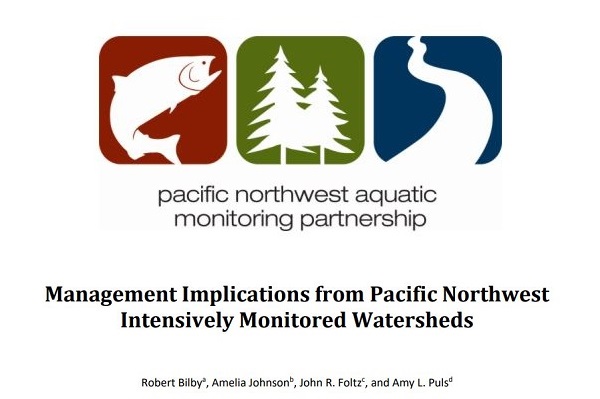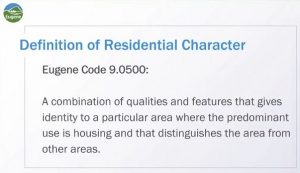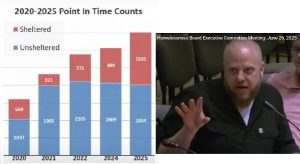Watershed committee to interview 11 grant applicants seeking $100 million
6 min read
At its June 2 meeting, an Oregon Watershed Enhancement Board (OWEB) committee heard evaluations for 11 initiatives totaling just over $100 million. They also heard good news about federal funding. Grant Program Manager Eric Williams.
[00:00:14] Eric Williams, OWEB: A brief update on the Upper Middle Fork John Day Intensively Monitored Watersheds project, and Ken is going to provide that update for us.
[00:00:24] Ken Fetcho, OWEB: Good morning everybody, nice to see you. Ken Fetcho, Effectiveness Monitoring Coordinator. I’d like to provide a brief update on the Upper Middle Fork John Day River Intensively Monitored Watershed, or IMW. This is a long-term watershed scale monitoring project to assess the effects of watershed restoration on the population scale response to spring Chinook and summer steelhead.
[00:00:50] This project started in 2008, a, collaboration with ODF&W, OWEB, the Confederated Tribes of Warm Springs and North Fork John Day Watershed Council, and many other partners. 2008, 2007. there was this talk about this need to establish these long-term monitoring projects across the Pacific Northwest. So NOAA approached Oregon, and we selected the Upper Middle Fork John Day River as this area to be intensively monitored with partners.
[00:01:18] And so every year NOAA makes approximately $300,000 available to the states of Oregon, Washington and Idaho, We got word in March that we were to receive another annual installment of these funds. It’s really $289,000-ish, but it’s always changes a little bit, but I just rounded up, that’s to each state. So we’ll get $289(K), Idaho gets $289(K) and Washington gets $289(K) and there’s some of that funding off the top for admin costs.
[00:01:48] And so we’re just letting you guys know that things are on track. We’re likely to see that contract amendment in June and so that’s exciting.
[00:02:00] Dan Brown (EPA, non-voting): Ken, how long has the monitoring been going on in the John Day?
[00:02:07] Ken Fetcho, OWEB: We are in year 15. We have a ten-year report that we presented to the board and it was written in 2017 and presented to the board in 2018, and so we will be doing a 15-year rollup next year. And I really think that’s a great opportunity to come to you guys when that’s complete at that sort of end at (20)23, early (20)24 to describe what we’re learning from that 15-year rollup.
[00:02:32] Dan Brown (EPA, non-voting): And then is NOAA consolidating the monitoring from all three states into some sort of general trends for the species, or…?.
[00:02:42] Ken Fetcho, OWEB: Yeah, there’s a variety of synthesis documents and the report came out yesterday of all the Pacific Northwest IMW findings.
[00:02:51] John Q: One of its interesting findings is that not all IMW’s saw results from large wood placement. The report recommends more study to identify why.
[00:02:59] Ken Fetcho, OWEB: And that might be of interest to you guys and to potentially dig into more at a committee level or even in the board in the future.
[00:03:07] John Q: Introducing the Focused Investment Partnership, Eric Williams.
[00:03:12] Eric Williams: The bulk of the agenda for today is preparation for the June 14th, 15th interviews of FIP partnership applicants, in public session. (I’ll) turn it over to my colleague, Eric Hartstein.
[00:03:22] Eric Hartstein: Great. Thanks, Eric. So for this current biennium solicitation for the FIP program, OWEB received 11 applications requesting just about $100 million over three biennia. And really for the first time we have applications in each of the seven board-identified ecological priorities for the FIP program.
[00:03:44] In March, the first panel evaluated the capacity of the partnerships to implement their initiative. And then in late March and April a second expert review panel focused on ecological merits of each of the applications.
[00:03:58] In a couple of weeks, the grants committee will be conducting interviews and making recommendations for the full board to consider when making FIP awards at the July board meeting.
[00:04:10] So potential interview questions from OWEB staff. The committee is encouraged to use these questions during the interviews, but also to feel free to ask any questions based on the application materials, your knowledge of the board ecological priorities, the initiative geography, or the partnerships themselves.
[00:04:29] John Q: For each application, here’s the expert evaluation and one of the suggested questions.
00:04:36] Eric Hartstein: The Klamath Siskiyou Oak Network application addresses the ‘Oak Woodlands and Prairie Habitat’ board priority. They requested a little over $7 million over three biennia of OWEB funding, overall rating of a high minus. So first question is: With only two partners set to receive FIP funding if awarded, both involved in other FIPs, how will the partnership achieve its goals if capacity issues arise at one or both organizations?
[00:05:07] The Harney Basin Wetlands Collaborative is addressing the ‘Oregon Closed Lakes Basin Wetlands’ board priority. The total requested funding is close to $12 million, overall rating of medium plus. Staff questions: What is the litigation status around Foley Slough and how will it impact the ability of the partners to implement their work plan?
[00:05:28] The East Cascades Oak Partnership, which is addressing the ‘Oak Woodlands and Prairie Habitat’ board priority. Total requested in funding is just over $7 million, an overall rating of high minus. The proposal discusses permit and burn windows as challenges—how will these challenges be addressed?
[00:05:47] The Siuslaw Coho Partnership, addressing the ‘Coho Habitat and Populations Along the Oregon Coast’ board priority. Requested the maximum of $12 million over the three biennia, an overall rating of high minus. Describe how warm water fish in Triangle Lake might impact projects in the area and the partnership’s plan to address potential impact.
[00:06:10] The Oregon Central Coast Estuary Collaborative is addressing the ‘Coastal Estuaries in Oregon’ board priority. Total requested is just over $7.8 million, an overall rating of high minus. Has the partnership considered conducting status and trends monitoring to better understand the impact of the initiative as a whole?
[00:06:31] The Oregon All Counties CCAA Steering Committee addressing the ‘Sagebrush / Sage-steppe Habitat’ board priority. Total requested is the maximum of $12 million, an overall rating of medium plus. How does the partnership see their efforts in light of climate change, catastrophic wildfire and invasive annual grasses—Can their conservation efforts keep up with deteriorating conditions on the landscape?
[00:06:58] The Salmon Superhighway Partnership, addressing ‘Aquatic Habitat for Native Fish’ board priority. Total requested is just over $9.3 million, an overall rating of a medium plus. Many of the proposal’s identified fish passage barriers along the salmon superhighway are partial barriers. How does the partnership evaluate the ecological benefits versus cost to replace partial barriers?
[00:07:23] The Tenmile Lakes Steering Committee, which is addressing the ‘Coho Habitat and Populations along the Coast’ board priority, total requested is just over $3.6 million. The budget is weighted heavily on land acquisition. Given the complexities and uncertainties around land acquisition, describe why the partnership feels confident that it will achieve the ecological outcomes described in the proposal.
[00:07:49] The Klamath Lake Forest Health Partnership, addressing the ‘Dry Type Forest Habitat’ board priority. Total requested funding is the maximum of $12 million, overall rating of medium plus. There is a significant liability associated with reintroducing fire to the landscape. Describe how the partnership addresses the liability and smoke management concerns.
[00:08:12] The Coos Basin Coho Partnership, addressing the ‘Coho Habitat and Populations along the Oregon Coast’ board priority. Total requested is just over $11 million, an overall rating of high minus. The proposal references a climate resiliency mapping tool that was developed by partners. Describe the tool and how the partnership utilizes it.
[00:08:34] And the Hood River Basin Partnership, which is addressing the ‘Aquatic Habitat for Native Fish Species’ board priority. Total requested is just over $6.5 million with an overall rating of high minus. Describe how the decision was reached to include the entire Hood River Basin geography in the FIP initiative geography. Describe how the initiative’s implementation and monitoring data will be managed, analyzed, and interpreted.
[00:09:04] Eric Williams: Please do feel free to contact any of us to talk through your questions before we head to the interview meeting on the 14th and 15th.
[00:09:11] John Q: After hearing the committee’s recommendations, the full OWEB board would award the partnership grants in July.



